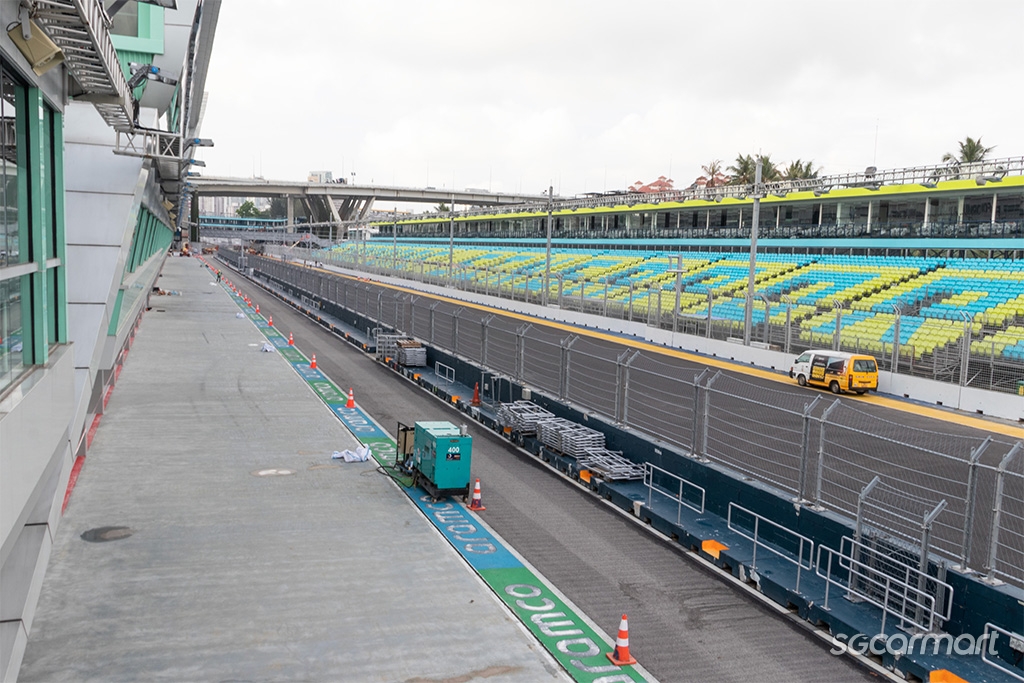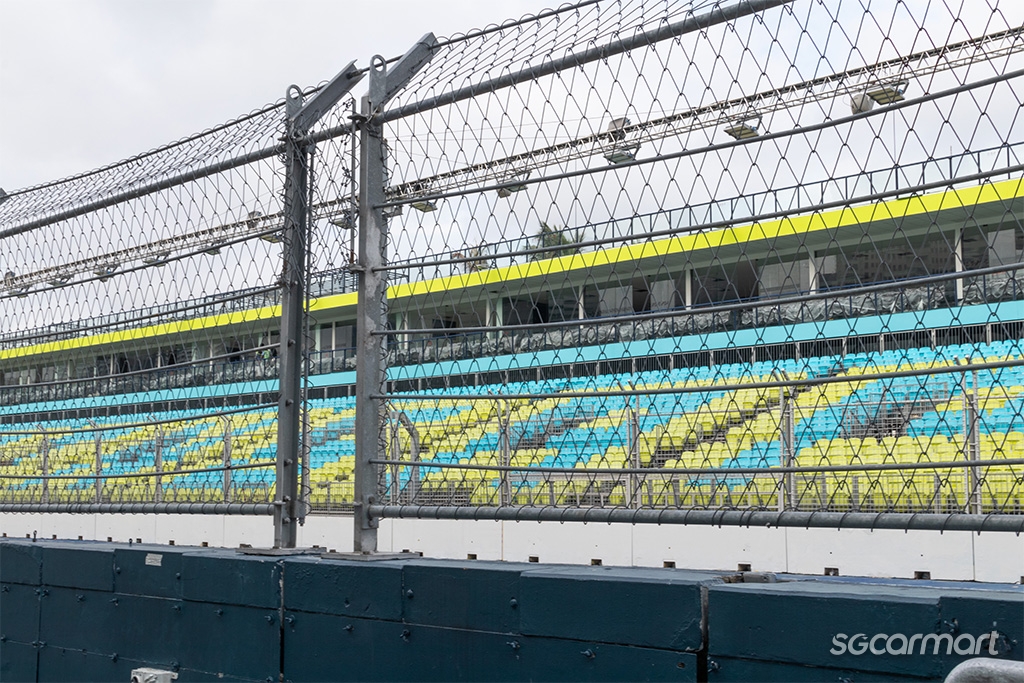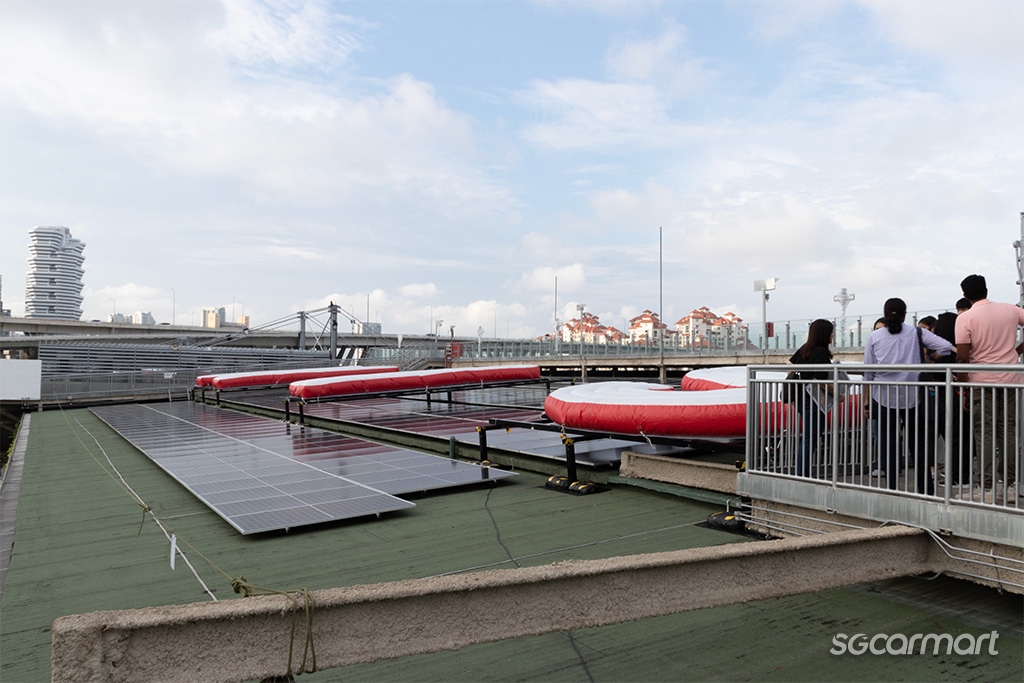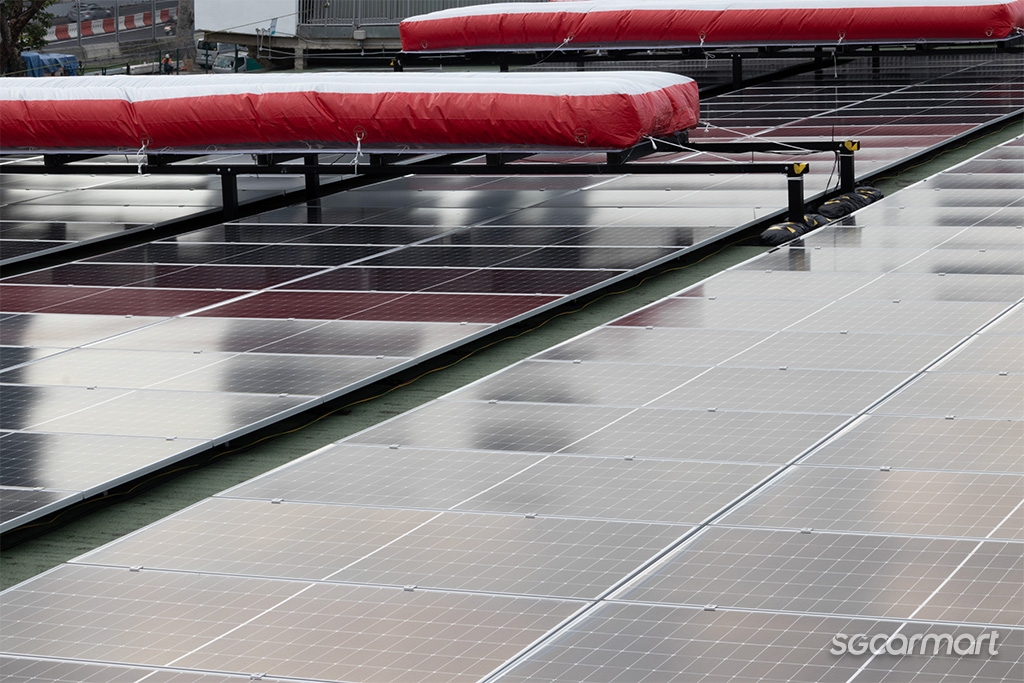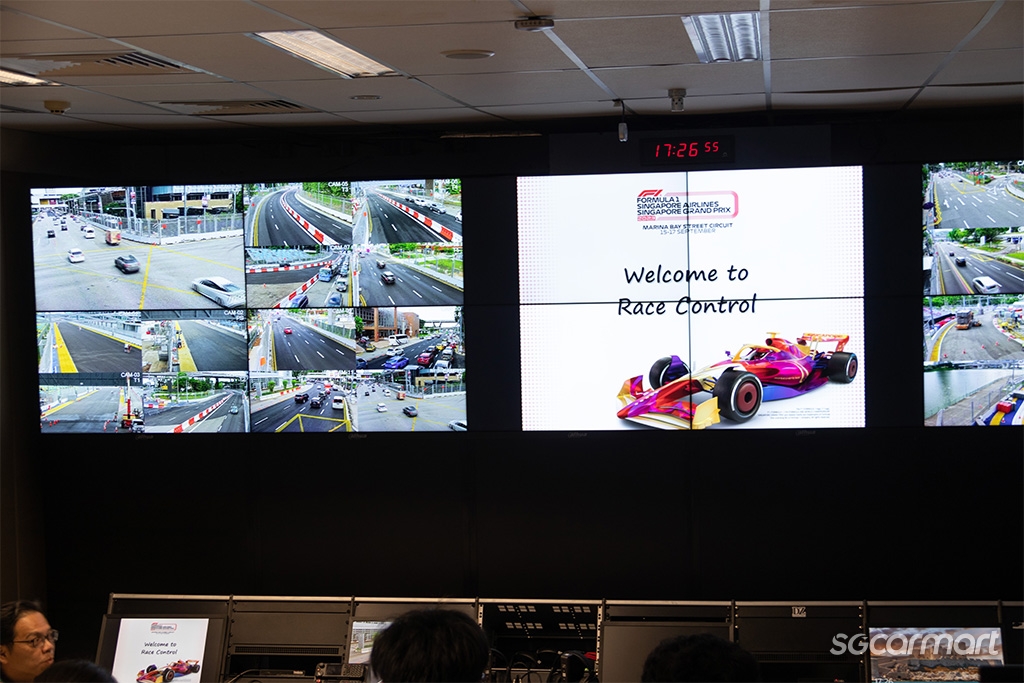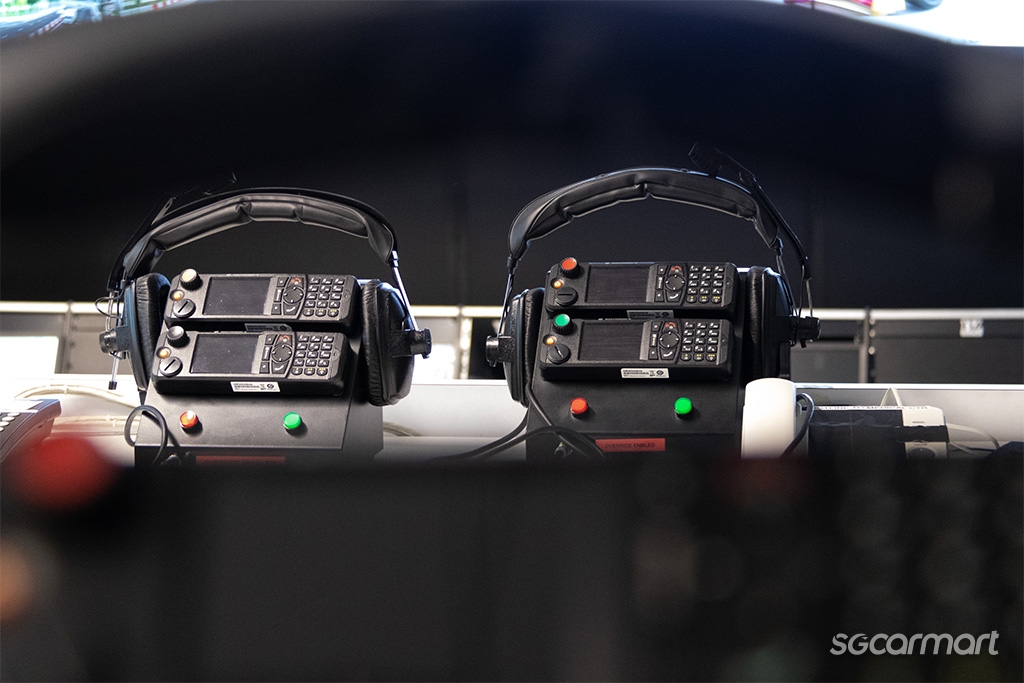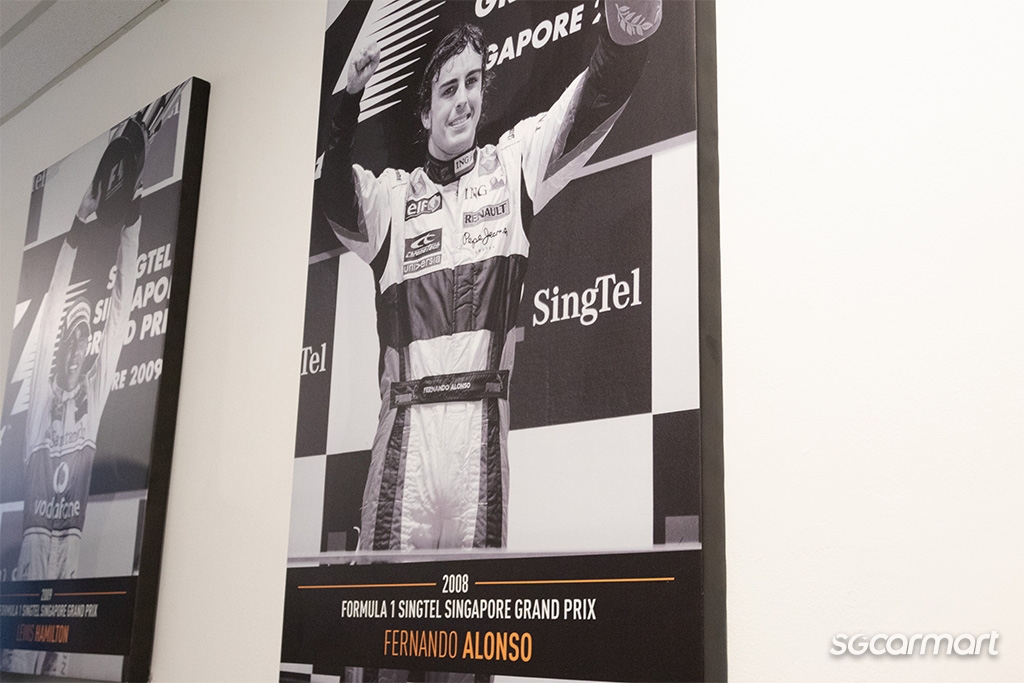The 2023 Singapore Grand Prix - in quick numbers
23 Aug 2023|796 views
It feels like only yesterday that the Singapore Grand Prix (GP) made a splashy return - yes, literally wet weather included - to our roads after a two-year, pandemic-induced hiatus.
Once again, however, the months have blown past, and the season of road closures, making merry at the Circuit Park, and of course, witnessing ear-pounding race action is suddenly upon us. Taking place this year across 15 to 17 September, the 2023 Singapore GP is right around the bend, and before we know it, Friday's free practice sessions will be over; it'll be Sunday, and we'll be watching eagerly once more to see who crosses the line first.
From amendments to the track length, to newfound steps towards carbon neutrality, here are some interesting facts we learned (and that you should know) about this year's iteration of Singapore's raucous, dazzling and intensely humid Grand Prix.
4.94km: Length of (shortened) track for the 2023 Singapore GP
With its track layout effectively borrowing from tarmac used by CBD-goers for the better part of 11 months every year, the Marina Bay Street Circuit has always been uniquely shaped by our lack of land.
But tarmac-sharing aside, land scarcity also throws another element into the mix: Constant redevelopment. With The Float @ Marina Bay undergoing renovation to become a new 'NS Square', the portion that used to comprise Turns 16 to 19 has consequently been removed from the track. Instead, a wider straight now stands in its place.
At 4.94km in length, the 2023 track is now shorter than last year's, which clocked in at 5.06km. This naturally translates to quicker lap times, and thus, also more laps - 63 this year, compared to 61 in 2022. The Singapore GP is known for maxing out the two-hour time limit for races, but barring multiple incidents, expect a quicker race in 2023.
22,000 metres (or 22km): Total length of fence wrap used across the Circuit Park
It's not just the 4.94km track itself that requires fencing up.
The race weekend doesn't just play host to the drivers and the on-site race spectators themselves, but also functions as a mega-sized party where fans get the chance to catch their favourite musical acts in action. Expectedly, booths selling merch and food complete this intensely festive and celebratory picture.
Last year, more than 302,000 showed up over race weekend, and to make sure that everyone is kept safely where they should be, a huge quantity of fence wrap is required.
And we mean a huge quantity. It probably comes as no surprise that the Circuit Park covers an area equivalent to 80 football fields. Across its four zones, we hear approximately 22,000 metres - or 22km - of fence wrap is used. In line with efforts in the wider Formula One space, the Singapore GP says that these are also made of eco-materials for reasons of sustainability.
That brings us to…
1,396: Number of solar panels recently installed atop of F1 Pit Building
Reaching net-zero carbon emissions by 2030 isn't just a lofty on-paper goal declared by the sport - it's a reality that organisers all around the world are already taking incremental steps towards achieving.
For the first time ever, the Singapore F1 Pit Building is now no longer plugged in to our power grid; its roof has been covered since July this year (just last month!) with nearly 1,400 solar panels, covering an area of about 3,600 square metres.
At about 2.2 metres long, and 1.1 metres wide each, the solar panels are estimated to generate up to 803,155 kWh a year - enough to power the Pit Building for an entire month. (To put into context how much energy is required over the race season, this is apparently also enough to power 199 4-Room HDB flats for a year!)
Naturally this isn't the Singapore GP's sole effort.
Last year, the sales ban of single-use plastics helped to save 160,000 bottles from the landfill. Switching to LED lights this year also promises to cut energy consumption by 30%, while local race organisers are pivoting towards used vegetable oil for biodiesel. In all, the Singapore GP is aiming for a 52% reduction in CO2 emissions by 2028.
30: People allowed in the Race Control room
Whirring of the aircon fans aside, we're told you can hear a pin drop in the Race Control room when the lights go green - that's how tense everyone is as the race unfolds on Sunday evening.
We're told the atmosphere is always serious in the Race Control room - which is also known as the nerve centre for the race
Known as the nerve centre of the Singapore Grand Prix, the Race Control room is so tightly controlled that even the drivers themselves aren't allowed inside, and that only 30 passes are handed out. (Another interesting figure? There are 44 screens here; they were showing a live-feed of the CBD traffic when we visited.)
This is, after all, the space in which the practice sessions, qualifying laps, and the race itself are all monitored and supervised; where potential penalties are handed out, and where delays - as Singapore knows all too well - can be called in the event of inclement weather.
14: Number of races held in Singapore after 17 September
Yes, 15 years have come and gone since Singapore's inaugural Formula One Night Race was held at the Marina Bay Street Circuit in 2008. In fact, were it not for the pandemic, 2023 would have marked its 16th iteration.
We don't have to fret about the 14th race being the final one too. Just last year, Formula One announced a multi-year extension of its race contract with the Singapore GP and Singapore Tourism Board, ensuring that the lights will continue to flood our city centre every year until 2028 at the very least.
Here are a few other stories that may interest you!
A day with the Alfa Romeo Sauber F1 Team
Four cool experiences at Porsche Carrera Cup Asia you shouldn't miss
It feels like only yesterday that the Singapore Grand Prix (GP) made a splashy return - yes, literally wet weather included - to our roads after a two-year, pandemic-induced hiatus.
Once again, however, the months have blown past, and the season of road closures, making merry at the Circuit Park, and of course, witnessing ear-pounding race action is suddenly upon us. Taking place this year across 15 to 17 September, the 2023 Singapore GP is right around the bend, and before we know it, Friday's free practice sessions will be over; it'll be Sunday, and we'll be watching eagerly once more to see who crosses the line first.
From amendments to the track length, to newfound steps towards carbon neutrality, here are some interesting facts we learned (and that you should know) about this year's iteration of Singapore's raucous, dazzling and intensely humid Grand Prix.
4.94km: Length of (shortened) track for the 2023 Singapore GP
With its track layout effectively borrowing from tarmac used by CBD-goers for the better part of 11 months every year, the Marina Bay Street Circuit has always been uniquely shaped by our lack of land.
But tarmac-sharing aside, land scarcity also throws another element into the mix: Constant redevelopment. With The Float @ Marina Bay undergoing renovation to become a new 'NS Square', the portion that used to comprise Turns 16 to 19 has consequently been removed from the track. Instead, a wider straight now stands in its place.
At 4.94km in length, the 2023 track is now shorter than last year's, which clocked in at 5.06km. This naturally translates to quicker lap times, and thus, also more laps - 63 this year, compared to 61 in 2022. The Singapore GP is known for maxing out the two-hour time limit for races, but barring multiple incidents, expect a quicker race in 2023.
22,000 metres (or 22km): Total length of fence wrap used across the Circuit Park
It's not just the 4.94km track itself that requires fencing up.
The race weekend doesn't just play host to the drivers and the on-site race spectators themselves, but also functions as a mega-sized party where fans get the chance to catch their favourite musical acts in action. Expectedly, booths selling merch and food complete this intensely festive and celebratory picture.
Last year, more than 302,000 showed up over race weekend, and to make sure that everyone is kept safely where they should be, a huge quantity of fence wrap is required.
And we mean a huge quantity. It probably comes as no surprise that the Circuit Park covers an area equivalent to 80 football fields. Across its four zones, we hear approximately 22,000 metres - or 22km - of fence wrap is used. In line with efforts in the wider Formula One space, the Singapore GP says that these are also made of eco-materials for reasons of sustainability.
That brings us to…
1,396: Number of solar panels recently installed atop of F1 Pit Building
Reaching net-zero carbon emissions by 2030 isn't just a lofty on-paper goal declared by the sport - it's a reality that organisers all around the world are already taking incremental steps towards achieving.
For the first time ever, the Singapore F1 Pit Building is now no longer plugged in to our power grid; its roof has been covered since July this year (just last month!) with nearly 1,400 solar panels, covering an area of about 3,600 square metres.
At about 2.2 metres long, and 1.1 metres wide each, the solar panels are estimated to generate up to 803,155 kWh a year - enough to power the Pit Building for an entire month. (To put into context how much energy is required over the race season, this is apparently also enough to power 199 4-Room HDB flats for a year!)
Naturally this isn't the Singapore GP's sole effort.
Last year, the sales ban of single-use plastics helped to save 160,000 bottles from the landfill. Switching to LED lights this year also promises to cut energy consumption by 30%, while local race organisers are pivoting towards used vegetable oil for biodiesel. In all, the Singapore GP is aiming for a 52% reduction in CO2 emissions by 2028.
30: People allowed in the Race Control room
Whirring of the aircon fans aside, we're told you can hear a pin drop in the Race Control room when the lights go green - that's how tense everyone is as the race unfolds on Sunday evening.
We're told the atmosphere is always serious in the Race Control room - which is also known as the nerve centre for the race
Known as the nerve centre of the Singapore Grand Prix, the Race Control room is so tightly controlled that even the drivers themselves aren't allowed inside, and that only 30 passes are handed out. (Another interesting figure? There are 44 screens here; they were showing a live-feed of the CBD traffic when we visited.)
This is, after all, the space in which the practice sessions, qualifying laps, and the race itself are all monitored and supervised; where potential penalties are handed out, and where delays - as Singapore knows all too well - can be called in the event of inclement weather.
14: Number of races held in Singapore after 17 September
Yes, 15 years have come and gone since Singapore's inaugural Formula One Night Race was held at the Marina Bay Street Circuit in 2008. In fact, were it not for the pandemic, 2023 would have marked its 16th iteration.
We don't have to fret about the 14th race being the final one too. Just last year, Formula One announced a multi-year extension of its race contract with the Singapore GP and Singapore Tourism Board, ensuring that the lights will continue to flood our city centre every year until 2028 at the very least.
Here are a few other stories that may interest you!
A day with the Alfa Romeo Sauber F1 Team
Four cool experiences at Porsche Carrera Cup Asia you shouldn't miss
Thank You For Your Subscription.































